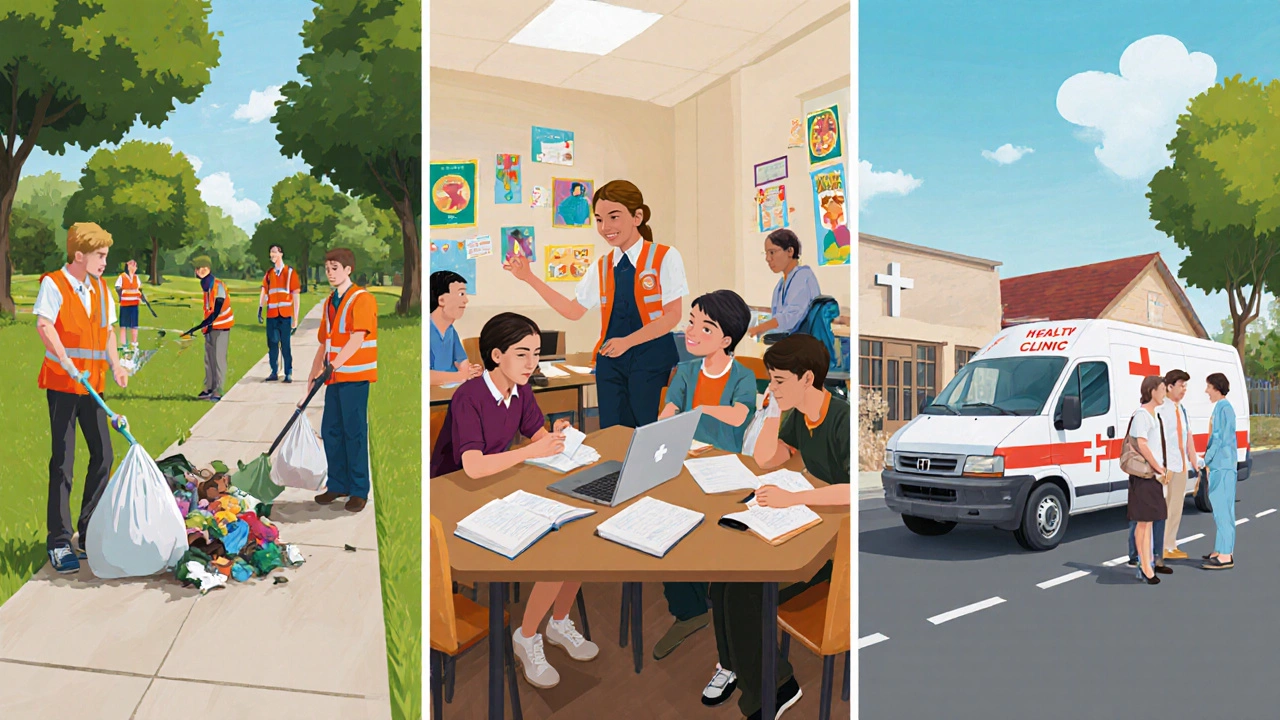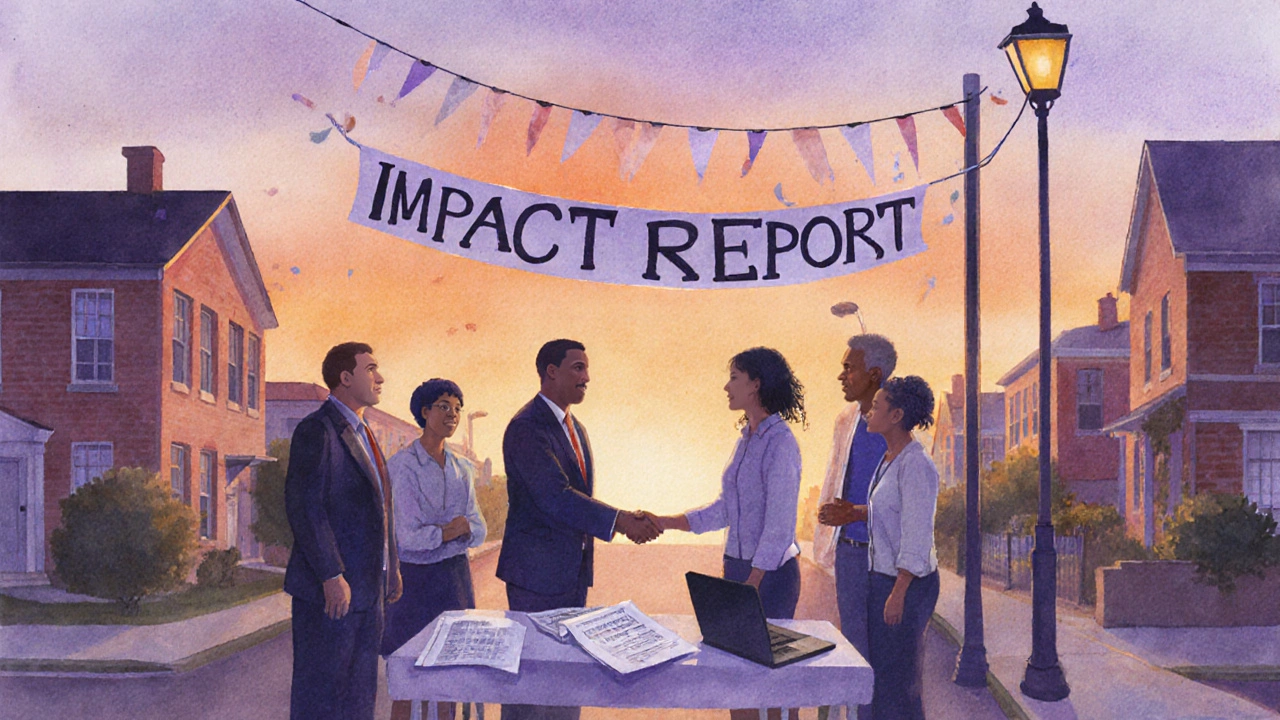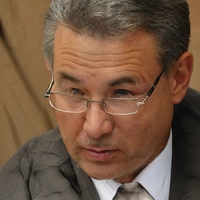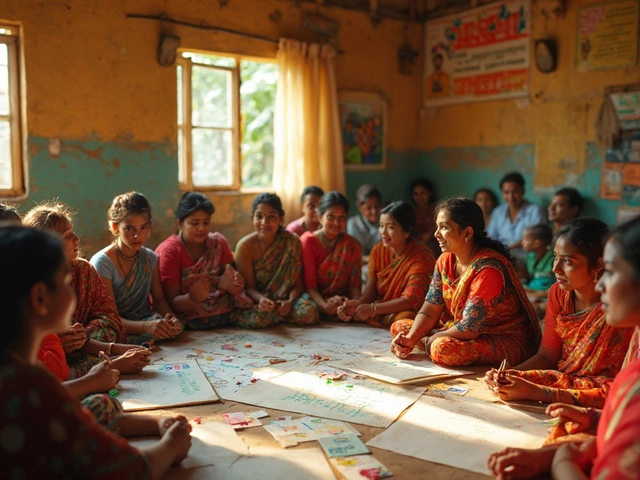Community Outreach Program Selector
Find Your Best Fit
This tool helps you match your community's specific needs with the most appropriate outreach program based on your available resources and priorities.
Community Assessment
Recommended Program
Program Comparison
Neighborhood Clean-Up
Focus: Environmental stewardship
Budget: $5,000 - $10,000
Volunteers: 200-400 hours
Success Metric: Pounds of litter removed
After-School Tutoring
Focus: Education support
Budget: $15,000 - $30,000
Volunteers: 600-1,200 hours
Success Metric: Improvement in test scores
Mobile Health Clinic
Focus: Basic medical services
Budget: $100,000 - $250,000
Volunteers: 1,000-2,000 hours
Success Metric: Patients served per month
When you hear the term Community Outreach Program is a structured set of activities designed to address specific needs in a local area, often delivered by nonprofits, schools, or civic groups, you probably picture volunteers handing out flyers or cleaning a park. In reality, a well‑crafted program blends clear goals, reliable funding, and measurable impact. Below you’ll find a practical guide to pinpoint the best outreach program for your neighborhood, backed by real‑world examples and a simple comparison table.
Key Takeaways
- Identify the core need of your community before picking a program type.
- Match program complexity to available volunteers, funding, and expertise.
- Use impact metrics early to prove value and attract ongoing support.
- Start small, document results, and scale gradually.
- Maintain strong partnerships with local Nonprofit organizations that provide governance, legal status, and fundraising channels and civic leaders.
What Makes an Outreach Program Effective?
Effectiveness isn’t about flashiness; it’s about results that matter to residents. Here are the three pillars most successful programs share:
- Clear, measurable goals. Whether you aim to reduce food insecurity by 15% or engage 200 youths in after‑school tutoring, the goal must be specific and time‑bound.
- Strong volunteer coordination. A dedicated Volunteer coordination system tracks schedules, skills, and training needs, ensuring the right people show up for the right tasks keeps momentum high.
- Reliable impact measurement. Impact measurement tools like surveys, pre‑post assessments, and data dashboards quantify outcomes and justify future funding give credibility.

Common Program Models and How They Compare
Below is a quick snapshot of three popular models you’ll encounter in most U.S. towns. They differ in focus, budget, and volunteer intensity.
| Program Model | Primary Focus | Typical Annual Budget | Volunteer Hours Needed | Key Success Metric |
|---|---|---|---|---|
| Neighborhood Clean‑Up | Environmental stewardship | $5,000-$10,000 | 200-400 hrs | Pounds of litter removed |
| After‑School Tutoring | Education support | $15,000-$30,000 | 600-1,200 hrs | Improvement in test scores |
| Mobile Health Clinic | Basic medical services | $100,000-$250,000 | 1,000-2,000 hrs | Patients served per month |
Each model relies on a specific Program model framework that defines target audience, service delivery method, and evaluation criteria. Choose the one that aligns best with your community’s most pressing need.
Matching Programs to Your Community’s Needs
Start with a quick needs assessment. Ask yourself:
- What problem keeps residents up at night? (e.g., unsafe streets, lack of after‑school care, limited health access)
- Who is directly affected? Identify the Target audience - seniors, families, youth, or undocumented workers - and their preferred communication channels.
- What existing resources can you leverage? Look for local schools, churches, or civic clubs willing to host events.
Map these answers onto the program models above. For instance, a town with high teenage dropout rates will benefit more from after‑school tutoring than a clean‑up drive.
Funding Sources and Partnerships
Money often decides whether a program can launch and stay alive. Here are the three most reliable Funding sources for community projects: municipal grants, corporate sponsorships, and grassroots fundraising:
- Municipal Grants. City councils allocate funds for health, safety, and environmental projects. Submit a one‑page impact statement and a 3‑year budget to increase chances.
- Corporate Sponsorships. Local businesses love brand exposure. Offer logo placement on flyers, t‑shirts, and social media shout‑outs.
- Community Fundraisers. Crowdfunding platforms and charity runs generate both cash and awareness.
When you partner with a reputable Nonprofit organization that holds 501(c)(3) status, you gain tax‑deductible donation eligibility and credibility with grant agencies. Draft a memorandum of understanding that outlines each party’s responsibilities, timelines, and reporting duties.

Measuring Impact and Adjusting Course
Even the best‑planned program can miss the mark if you don’t track progress. Use these Success metrics that tie directly to your original goals, such as number of families served, reduction in school absenteeism, or pounds of waste collected:
- Set a baseline before the first activity.
- Collect data monthly via simple Google Forms or paper logs.
- Review quarterly with volunteers and partners; note what works and what doesn’t.
- Adjust scope - maybe add a nutrition workshop to the tutoring program if parents express interest.
Publishing a short impact report on your website or local newsletter builds transparency and encourages new donors.
Implementation Checklist
- Define the core community need (one sentence).
- Select a program model that matches the need and your resources.
- Identify a lead Stakeholder (e.g., a school principal or neighborhood association president) who will champion the effort.
- Secure at least 30% of the projected budget before recruiting volunteers.
- Set up a volunteer coordination platform (e.g., SignUpGenius or a shared spreadsheet).
- Develop a simple impact measurement plan with clear metrics.
- Launch a pilot event, collect feedback, and refine the approach.
Following these steps keeps the project focused and reduces the risk of burnout among volunteers.
Frequently Asked Questions
How do I know which outreach program will have the biggest impact?
Start with a data‑driven needs assessment. Conduct short surveys, meet with local leaders, and review existing service gaps. Then match the most urgent need to a program model whose success metrics align with that need. Piloting a low‑cost version lets you test impact before scaling.
What if I lack funding for a larger program like a mobile clinic?
Partner with an existing nonprofit that already operates a mobile unit. You can provide local volunteers, help with outreach, and share fundraising responsibilities. This reduces capital costs while still delivering the needed service.
How many volunteers do I really need to run a weekly tutoring session?
A typical after‑school tutoring group of 12-15 students works best with 2-3 trained tutors and 1-2 supporting volunteers for logistics. That totals 4-5 volunteers per session, roughly 200-300 hours annually.
Can I measure success without fancy software?
Absolutely. Simple tools like Google Sheets for tracking attendance, paper surveys for satisfaction, and basic pre‑/post‑tests for learning outcomes provide reliable data. The key is consistency, not complexity.
What are common pitfalls to avoid when launching a new outreach program?
Over‑promising resources, neglecting clear goals, and failing to involve the target community early on are the biggest errors. Keep the scope realistic, set measurable objectives from day one, and seek feedback from residents before finalizing the design.





